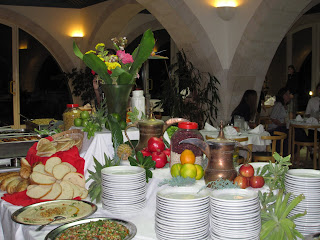

Each semester we have a Ramadan dinner where they serve traditional Arab food. Because of my design background they ask me to be in charge of setting up for the dinner. I was very excited the way it all came together and looked great. The students were willing to help with the set up and of course they enjoyed the evening meal. Some got into the spirit of the evening and dressed in traditional clothes they bought in Egypt.

























